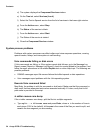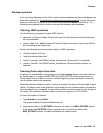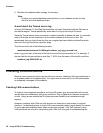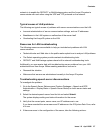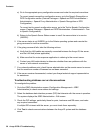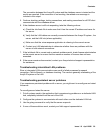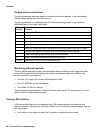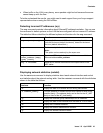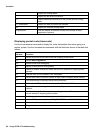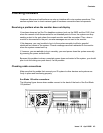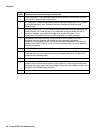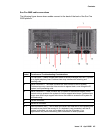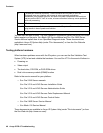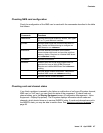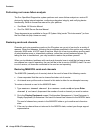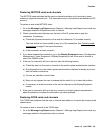
Contents
42 Avaya IR R2.0 Troubleshooting
-r
Display the routing tables.
-s
Display the per-protocol statistics.
-v
Display additional information for the sockets and the routing
table.
-I interface
Display the state of a particular interface.
-M
Display the multicast routing tables.
-P protocol
Limit the display of statistics or state of all sockets to those
applicable to protocol.
Displaying packet route (traceroute)
Use the traceroute command to display the route that packets take when going to a
remote system. Use the traceroute command with the attributes shown in the table that
follows.
Attribute Function
-f
Set the initial time-to-live used in the first outgoing probe packet.
-F
Set the don't fragment bit.
-d
Enable socket level debugging.
-g
Specify a loose source route gateway.
-i
Specify a network interface to obtain the source IP address for outgoing probe
packets.
-I
Use the ICMP ECHO instead of UDP datagrams.
-m
Set the max time-to-live (max number of hops) used in outgoing probe packets.
-n
Print hop address numerically rather than symbolically.
-p
Set the base UDP port number used in probes. (Default is 33434.)
-r
Bypass the normal routing tables and send directly to a host on an attached
network.
-s
Use the following IP address (which usually is given as an IP number) as the
source address in outgoing probe packets.
-t
Set the type of service in probe packets to the following value.
-v
List the ICMP packets other than TIME_EXCEEDED and UNREACHABLE.
-w
Set the time (in seconds) to wait for a response to a probe.
-x
Toggle checksums.



